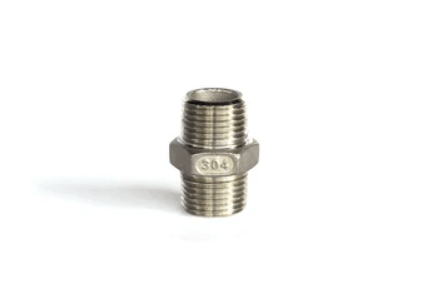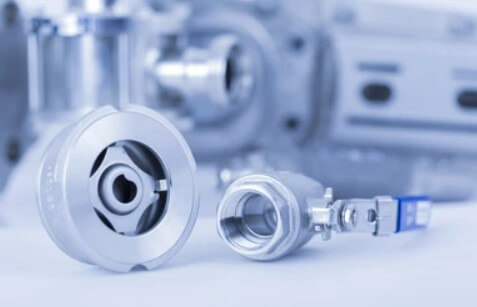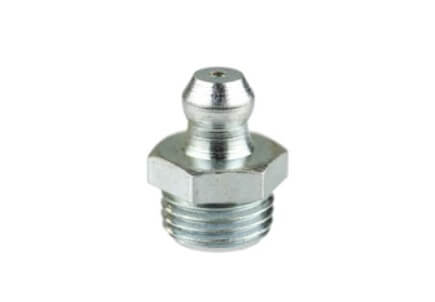Lubrication is a critical aspect of maintaining hydraulic systems, ensuring optimal performance and extending the lifespan of equipment. Among the key components involved in this process are hydraulic zerk fittings. In this article, we will explore the ins and outs of hydraulic zerk fittings, their functionality, installation, and maintenance procedures, as well as the benefits they offer.
Zerk fittings, also known as grease fittings or Alemite fittings, have a long history dating back to the early 20th century. They were first patented by Oscar U. Zerk in 1929, revolutionizing the lubrication process for machinery.
Several examples of hydraulic Zerk fittings:
➢ Screw-Type Hydraulic Connector
Zerk Fitting Design and Construction
Body and Threads:
Zerk fittings consist of a threaded body that allows them to be securely fastened to the equipment. The threads ensure a tight connection and prevent leakage during lubrication.
Ball Check Valve Mechanism:
A key feature of zerk fittings is the ball check valve mechanism. It consists of a small ball inside the fitting that allows grease to enter but prevents it from flowing back out once pressure is released. This mechanism ensures efficient lubrication and minimizes the risk of contaminants entering the system.
Grease Nipple:
The grease nipple is the outlet point of the zerk fitting. It is where grease is injected into the equipment, providing lubrication to the necessary components.
Functionality and Purpose of Hydraulic Zerk Fittings
Lubrication in Hydraulic Systems
Hydraulic zerk fittings play a crucial role in lubricating moving parts and components within hydraulic systems. They enable the controlled injection of grease into specific points, ensuring proper lubrication where it is needed most.
Ensuring Proper Equipment Performance
By providing a consistent supply of lubrication, zerk fittings help reduce friction and wear on components, ensuring smooth operation and preventing unnecessary strain on the equipment.
Preventing Wear and Tear
Proper lubrication through zerk fittings helps minimize friction-induced wear and tear on moving parts. It reduces the likelihood of premature component failure and extends the overall lifespan of the equipment.
Increasing Equipment Lifespan
Regularly lubricating equipment using zerk fittings improves its longevity. By minimizing friction and preventing excessive wear, the components are protected, resulting in extended service life and reduced maintenance costs.
Proper Installation and Maintenance of Hydraulic Zerk Fittings
Finding the Right Location for Zerk Fittings
When installing zerk fittings, it is crucial to identify the optimal locations for effective lubrication. This involves considering the equipment's design, access points, and critical components that require lubrication.
Cleaning and Preparing Fitting Surfaces
Before installation, it is essential to clean and prepare the fitting surfaces. Remove any dirt, debris, or old grease to ensure a clean connection and prevent contamination.
Using Thread Sealant (Locktite)
To prevent leakage and ensure a secure fitting, applying thread sealant, such as Locktite, can be beneficial. This helps create a tight seal and minimizes the risk of grease escaping.
Torque Specifications for Installation
Follow the manufacturer's recommended torque specifications when tightening zerk fittings. Proper torque ensures a secure connection without damaging the equipment or fittings.
Regular Inspection and Lubrication Maintenance
Regularly inspect zerk fittings to ensure they are in good condition and free from blockages or damage. Clean and lubricate the fittings as part of routine maintenance to ensure their proper functionality.
Common Challenges and Troubleshooting with Hydraulic Zerk Fittings
Clogged or Blocked Fittings
Over time, zerk fittings can become clogged or blocked due to dried grease or contaminants. Regular cleaning and greasing can help prevent blockages and ensure the smooth flow of grease.
Broken or Damaged Ball Check Valve
If the ball check valve within the zerk fitting becomes damaged or broken, it may hinder the flow of grease. In such cases, the fitting should be replaced to restore proper lubrication.
Improper Grease Compatibility
Using the wrong type of grease can lead to compatibility issues and compromise the effectiveness of the lubrication process. Always consult equipment manuals and adhere to the recommended grease specifications.
Inadequate Grease Volume
Insufficient grease volume during lubrication can lead to ineffective lubrication, causing increased friction and potential damage. Ensure the correct amount of grease is applied to maintain optimal lubrication levels.
Benefits and Advantages of Hydraulic Zerk Fittings
Easy and Convenient Lubrication
Zerk fittings simplify the lubrication process by providing a centralized and accessible point for grease injection. This makes routine maintenance and lubrication tasks more efficient and time-saving.
Reduced Downtime and Maintenance Costs
Proper lubrication through zerk fittings reduces the likelihood of equipment breakdowns and extends component life. This leads to reduced downtime and lowers overall maintenance costs.
Improved Equipment Performance and Efficiency
Efficient lubrication provided by zerk fittings helps minimize friction, heat generation, and energy loss within hydraulic systems. This, in turn, enhances equipment performance and improves overall system efficiency.
Extending Equipment Lifespan
Regular lubrication using zerk fittings significantly contributes to extending the lifespan of hydraulic equipment. It protects critical components from excessive wear, reducing the need for premature replacements and costly repairs.
Safety Considerations with Hydraulic Zerk Fittings
High-Pressure Risks
Hydraulic systems operate under high pressures, and zerk fittings can be subjected to such pressures during lubrication. It is important to follow proper safety procedures and use personal protective equipment (PPE) to prevent accidents and injuries.
Personal Protective Equipment (PPE)
When working with hydraulic systems and zerk fittings, wearing appropriate PPE, such as safety goggles, gloves, and protective clothing, is essential to protect against potential hazards, including grease injection or high-pressure leaks.
Proper Handling and Grease Disposal
Handle grease and lubricants with care, following manufacturer instructions and local regulations for proper disposal. Grease should be disposed of responsibly to prevent environmental contamination.
Upgrades and Innovations in Hydraulic Zerk Fittings
Sealed Zerk Fittings
Sealed zerk fittings incorporate additional sealing mechanisms to provide enhanced protection against contaminants and improve overall durability. They are particularly beneficial in harsh or demanding environments.
Pressure Relief Zerk Fittings
Pressure relief zerk fittings feature an integrated pressure relief valve that allows excess pressure to escape during lubrication. This prevents over-pressurization and potential damage to equipment.
Electronic Monitoring of Grease Levels
Recent advancements in zerk fitting technology include electronic monitoring systems that provide real-time feedback on grease levels. This allows for better maintenance scheduling and ensures optimal lubrication at all times.
Conclusion
In conclusion, hydraulic zerk fittings are integral to maintaining efficient and reliable hydraulic systems. By understanding their functionality, installation procedures, and maintenance requirements, equipment operators can ensure proper lubrication, extend equipment lifespan, and minimize downtime. Regular inspection, proper lubrication techniques, and adherence to safety measures will contribute to the overall success and longevity of hydraulic systems. Embracing innovations and advancements in zerk fitting technology further enhances the performance and efficiency of hydraulic systems, setting the stage for continued progress in the field of lubrication.
Post time: Jun-17-2023




